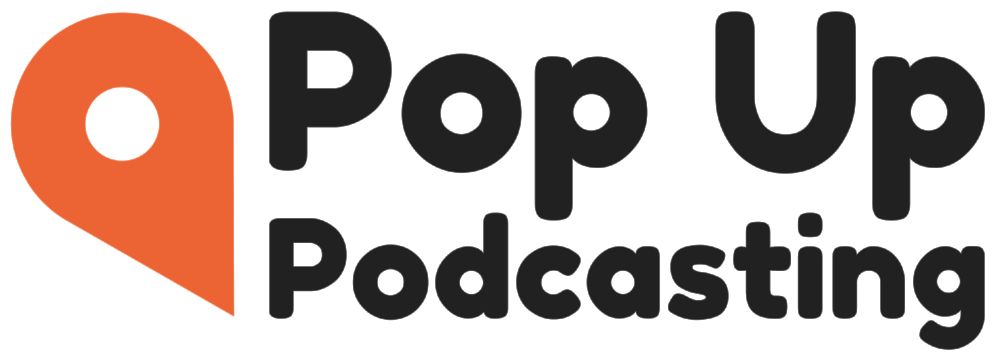Grow Your Podcast: The Basics
I’ve been making and promoting podcasts for over 10 years and these are the proven techniques every podcaster should be using to grow their show. Most podcasts aren’t doing all five - so start with these basics before moving on to the more advanced suggestions at the bottom.
Note: We saved the best for last - so read all the way through!
1. Be Everywhere:
Everyone has their favorite podcast app, so you’d better make sure your show can be found on all of them. Fortunately, just a handful of apps cover the vast majority of viewers and listeners.
According to Buzzsprout (one of the biggest podcast hosting companies), over 70% of podcast listening happens across just two apps: Apple Podcasts and Spotify. The third most common place people listen is on websites, followed by Google Podcasts (soon to be YouTube Music) and Amazon music.
Buzzsprout lists other apps, but they all mirror Apple’s podcast listings. So if you’re on Apple, Spotify, Google/YouTube Music and Amazon and you’re covering the vast majority of your potential audience.
The “non-Music” YouTube itself isn’t listed in Buzzsprout’s stats because they don’t pass along that data to third party hosting providers, but evidence shows YouTube is a juggernaut in the podcasting space, so be sure you’re there too! It’s easier than ever now that YouTube has added automatic ingest via RSS.
2. Make it Easy to Consume
Podcasts are great because they’re “sticky” – if someone finds your show and likes it, they can follow or subscribe to be updated when a new episode drops (thus “sticking” around).
Here are a few things you should be doing to leverage and encourage this behaviour:
Link to a landing page
Stop sharing Apple Podcasts or Spotify links on social media - less than a third of your potential audience uses either app. Link to a landing page instead.
A landing page is a single place you can send listeners to find your show, or a particular episode. Your podcast hosting company may provide a landing page, you can build your own, or you can use something like pod.link.
The landing page’s main job is to make it easy for anyone to consume your podcast, regardless of their favourite app – and even if they’ve never used a podcast app. Include prominent buttons for the most popular apps as well as a big ol’ “play” button in case they prefer to listen or watch right there on the web page (remember: the third biggest podcast app isn’t an app at all - it’s your website).
Use Email Notifications
Email is a powerful way to connect directly with your audience without any algorithms or tech giants getting in the way. You should be emailing your audience every time a podcast drops. Your landing page should include an easy way to join the email list. You can create a new list using something like SendFox, or piggy-back on your existing email newsletter. Speaking of which…
Leverage Owned Channels
Be sure to promote new episodes via the channels you already have and know your target audience is consuming. Promote the show in emails you’re already sending; promote it on websites that already have traffic; cross-promote it on videos you’re already publishing; mention it in webinars; put it in your social feeds etc…
This is low hanging fruit you should grab to build your podcast audience.
And remember to promote the content of new episodes! Would you click on “new episode, check it out!” if you’re not already familiar with the show? You need to give people a reason to watch or listen – what is it about this episode in particular that might get them excited?
3. Clips and Audiograms
Vertical video platforms like TikTok, YouTube Shorts and Instagram Reels have been a boon for podcasters. They give us an easy way to highlight and share an amazing moment or quote that would otherwise be buried 23 minutes into the episode.
If you can demonstrate your show’s value in 60 seconds or less, it should entice people to check out the full episodes.
OpusClip and Descript are two tools that use AI to identify potential clips, add captions, and prepare them for sharing.
In our experience nothing beats the human touch when it comes to choosing a short, shareable, standalone clip that makes sense and contains some information or entertainment value – but these tools can save some time.
What about audio-only podcasts?
Many of our clients who produce audio-only episodes still record video just for the clips.
Another option is to create “audiograms” which are audio clips brought to life with images, captions, and an animated waveform. These likely won’t draw the same attention on social media as full video, but do help visually highlight moments that would otherwise be buried deep within the show - just like video clips.
4. Text Matters
Your potential audience’s first impression of your show won’t be video or audio – it’ll be text – so make sure that text is on point.
Compelling titles and episode descriptions can make the difference between pressing play, and passing by – plus audio and video aren’t directly searchable, so relevant keywords are, well… key.
Our AI-Assisted Podcast Marketing, powered by Castmagic helps with all of that by providing a full podcast transcript, 5x title ideas, SEO-Friendly episode descriptions, keywords, YouTube chapters, and much more in just a few minutes.
Whether you create your podcast’s text by hand or with an AI-assist, doing it well will ensure your show is findable and accessible, while giving your target audience a reason to click “play”.
5. Guests to the Rescue
This is the podcast marketing tip that most people ignore, but I’ve seen it drive thousands of new viewers or listeners:
Leverage your guests’ followers.
First, let your guest know when the podcast is published by sending a thank-you email. Share your appreciation for the time they’ve already given you; mention how great they were on the show; provide a link to the episode; and ask them to share it with their audience.
Follow-Up is Key
Check their socials 3-7 days later and follow up if they haven’t yet shared (always being polite of course).
This can be a bit awkward, but the follow-up really is key. People are busy and unless you make it easy for them to share, and remind them to follow-through, they likely won’t.
You can make it even easier for your guests to share their appearance on your podcast by providing some suggested text and hashtags along with a branded image or clip to go along with their post. And of course when you post about the episode on social media, be sure to tag them – the option of re-posting your post makes it ultra simple for them.
Going Beyond the Basics
Nailing the basics above will take you much further than simply publishing episodes and hoping for the best. But of course, there are plenty of strategies that are beyond “basic”.
Here are a few ideas to get you thinking:
Livestream recording sessions
Use paid promotion
Social media
Directly in podcast apps
Audio or video ads on other podcasts
Cross promotion / guesting on other shows
Generate traditional media coverage
Engage with online communities related to your niche








